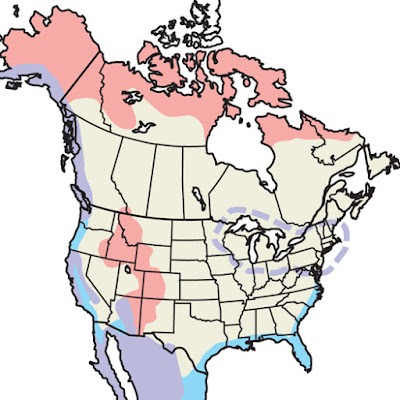On Friday, August 22, 2008, I took a United flight to Denver from LAX, leaving at 11:00 a.m. (I missed a 7:30 a.m. flight that was routed through Salt Lake City and got this as a direct flight). I rented a car and drove to Estes Park, a 1.5 hour drive, where I'd rented a large room at the Comfort Inn for myself, my son, Sam, and my brother-in-law, Dave Kenison.
Sam drove to Colorado from Utah with Dave. My nephew, Rick DeLong, his girlfriend, Kim, and a Ukrainian friend, Todd, were also there, but sleeping at the Longs Peak Campground. Rick and Kim had been hiking for weeks on the Continental Divide Trail where they'd done 450 miles through Colorado. We all went to the Grubstake restaurant in Estes Park and I enjoyed a wonderful dinner of bbq buffalo ribs, beer battered onion rings, a salad and fresh squeezed lemonade.
Saturday, August 23, I woke up at 2:50 a.m. to be at the Keyhole Trailhead by 4:00 a.m.
 |
| Estes Park to the Keyhole Route Trailhead. |
The hike to the 14,255 foot summit of Longs Peak is 14 miles roundtrip and 5,100 feet of elevation gain. It was one of the most challenging and exhilarating hiking/climbing experiences of my life, with some very scary stretches with lots of exposure. Dave and Sam had to drive back to Utah that evening. I stayed another night at the Comfort Inn and went back to Grubstake and had the bbq buffalo ribs again.
Sunday, August 24, I flew United out of Denver to LAX.


















































